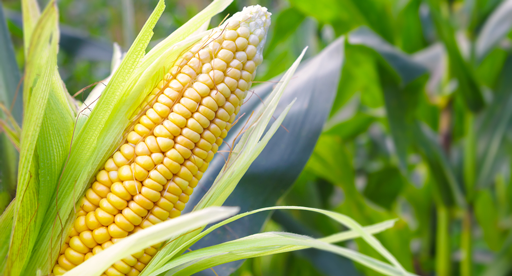Photo Credit: Wikimedia Commons
For many of us, growing corn in the garden is a staple every summer. Waiting (perhaps not so) patiently for teeny tiny green sprouts to poke up through the soil. Watching the golden tassels sway in the breeze mid summer, and then enjoying the delicious ears once they mature.
Like tomatoes, very few things compare to the taste of fresh sweet corn right out of the garden!
Growing corn is pretty straightforward, but if you’ve never done it before, don’t fret! We’ve got all the information you need to scatter some seeds in your garden, and get a good crop in a couple of months!
General Information
Corn is grown across most of the United States as an annual plant in homestead gardens and as a field crop, with most commercial production concentrated in a swath across the Midwest. It adores the heat and long sunny summer days, taking two to three months to mature.
While most people automatically think of growing sweet corn for personal use, there are a handful of different types of corn you can grow, depending upon your needs and what you want to do with the harvested ears.
Understanding the Different Types of Corn
Before you run out (or jump online) and buy seeds, let’s take a minute and discuss the different types of corn you can plant. Most of us automatically think of planting sweet corn, but other types of corn may also be an excellent fit for your garden space.
The different types of corn, whether sweet, dent, or flour corn, are defined by their internal kernel structure. The proportion of different starches in the endosperm dictates the different culinary properties of a type of corn.
Sweet Corn
Sweet corn is likely the type most people are familiar with, and without a doubt, it’s the one more commonly grown in gardens. It is eaten right off the cob in its “milk” stage when the kernels are still tender and juicy.
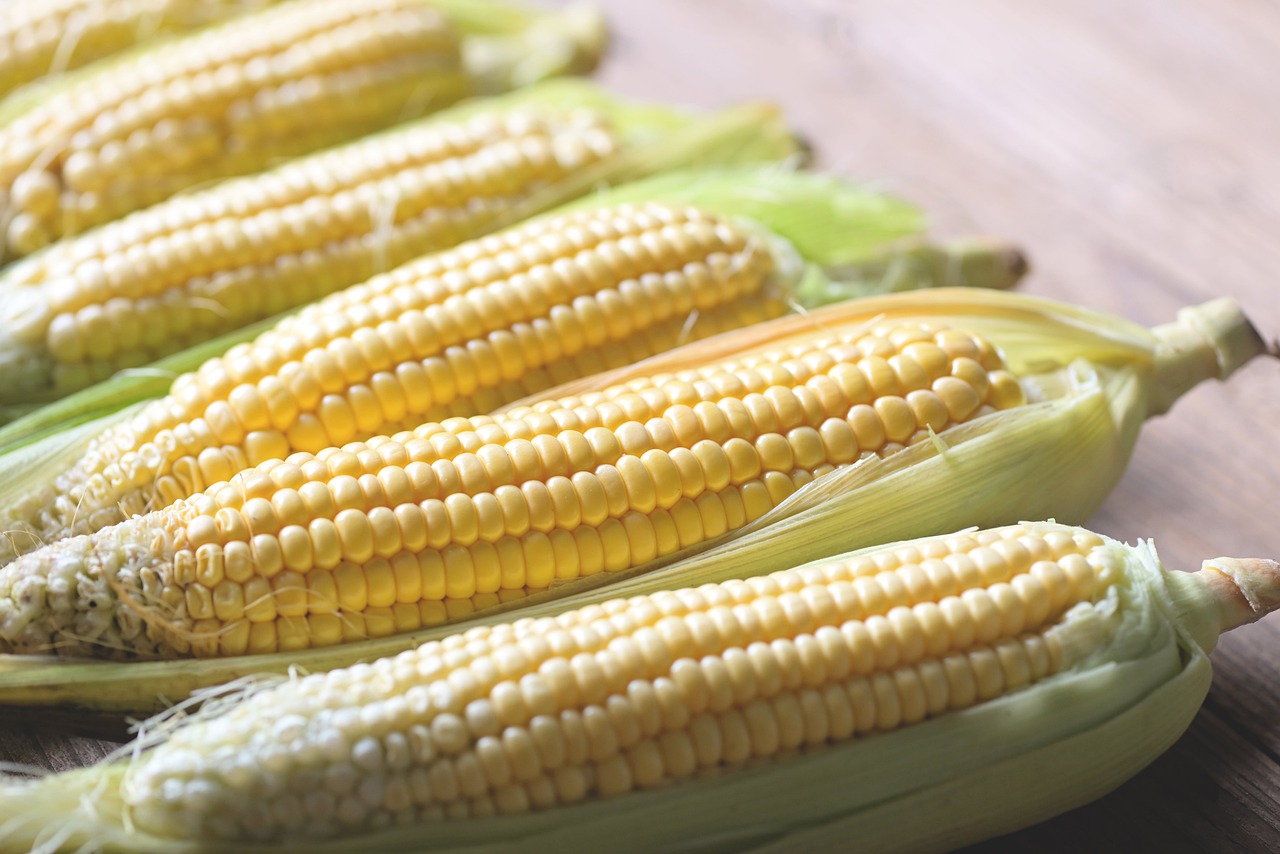 Photo Credit: Woravit | pixabay
Photo Credit: Woravit | pixabay
There are more than 85 different sweet corn varieties to choose from, all of which can be classified as one of three types: standard (su), sugary enhanced (se), and supersweet (sh2).
Standard
- Has the lowest sugar levels of the three.
- Has the traditional sweet corn flavor and texture.
- Has a short storage period. Once mature, the sugars quickly convert to starch, so they are only good for a couple of days.
Recommended Varieties: Silver Queen, Jubilee, Golden Bantam, Stowell’s Evergreen, Merit
Sugary Enhanced
- Has a medium sugar level between the other two types.
- Has tender, easy-to-chew kernels.
- Has a slightly longer harvest and storage period than standard types.
Recommended Varieties: Bodacious, Ambrosia Hybrid, Peaches and Cream, Sweet Temptation, Jackpot, Incredible, Serendipity (a blend of se and sh2)
Supersweet
- Has up to twice the sugar levels as standard varieties.
- Has the longest harvest and storage period.
- Has lower yields than standard sweet corn.
Recommended Varieties: Sugar Loaf, Sweet Time, Sweetie, Candy Store
Dent Corn
Dent corn is the most commercially grown corn in the United States, commonly known as field corn. It’s the corn you see growing for miles and miles and miles along highways, dirt roads, and interstates across states such as Illinois, Iowa, Nebraska, Minnesota, and Indiana.
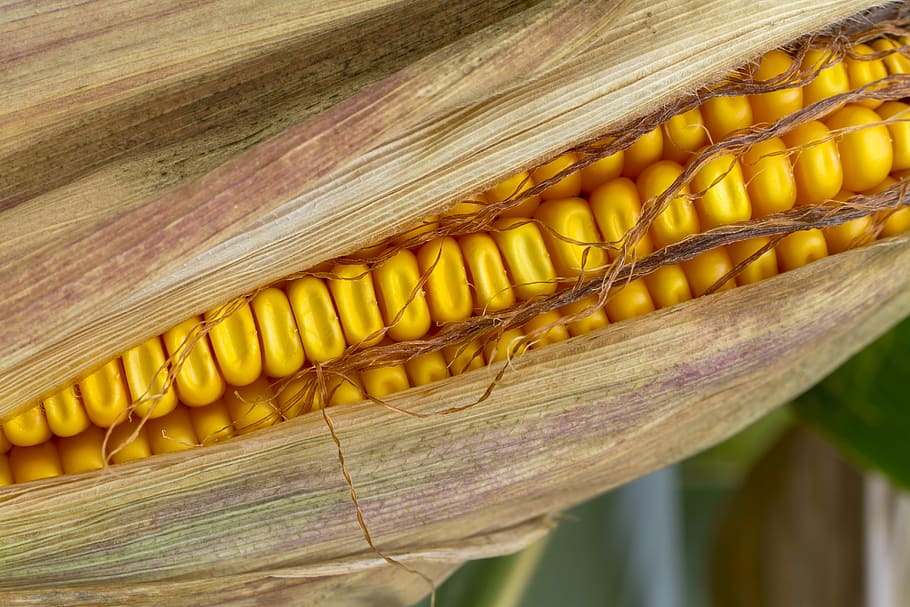 Photo Credit: pxfuel
Photo Credit: pxfuel
This type of corn is primarily used for animal feed, ethanol, and processed foods. Its kernels contain hard starch along the sides, surrounding a softer starch in the center. As the kernels dry, the center starch tends to shrink, creating a “dent” at the top of the kernel.
Recommended Varieties: Reid’s Yellow Dent, Hickory King White Dent, Lancaster Surecrop Dent, Trucker’s Favorite Yellow Dent, Bloody Butcher Dent
Flint Corn
Flint corn is similar to dent corn, with a hard outer layer of starch that protects the soft endosperm in the middle of the kernel. There is little sugar in this type. When ground, it is primarily used for polenta, grits, and atole. You can also treat flint corn with calcium hydroxide in a process known as nixtamalizing and use it to make masa tortillas.
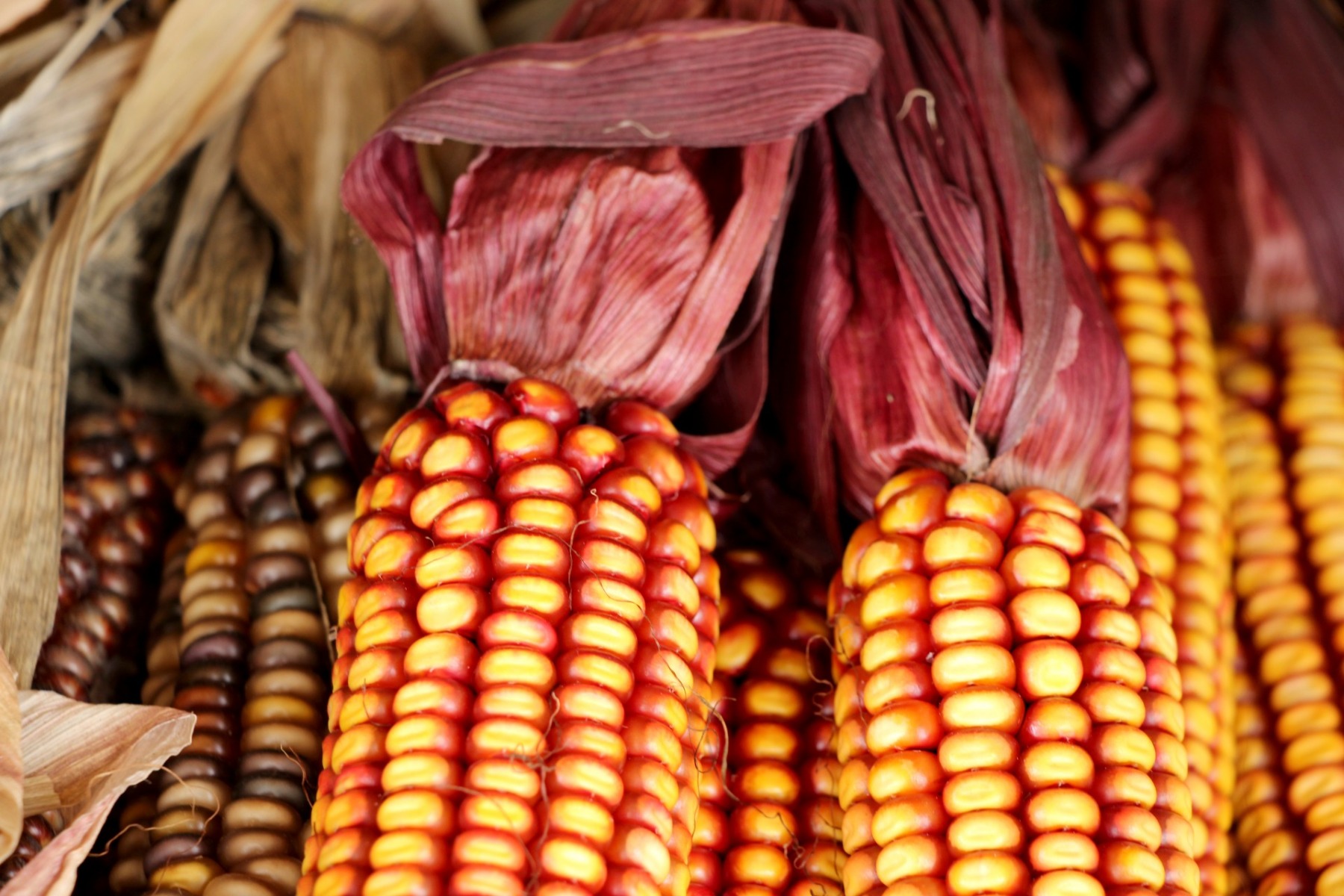 Photo Credit: PublicDomainPictures
Photo Credit: PublicDomainPictures
Recommended Varieties: Onaveño, Southern Maíz Blanco
Flour Corn
Flour corn kernels are predominantly soft starch, so they are easily ground into cornmeal, producing a finer end product than the other corn types. If you catch ears at the immature “milk” stage, you can steam them and eat them like sweet corn varieties.
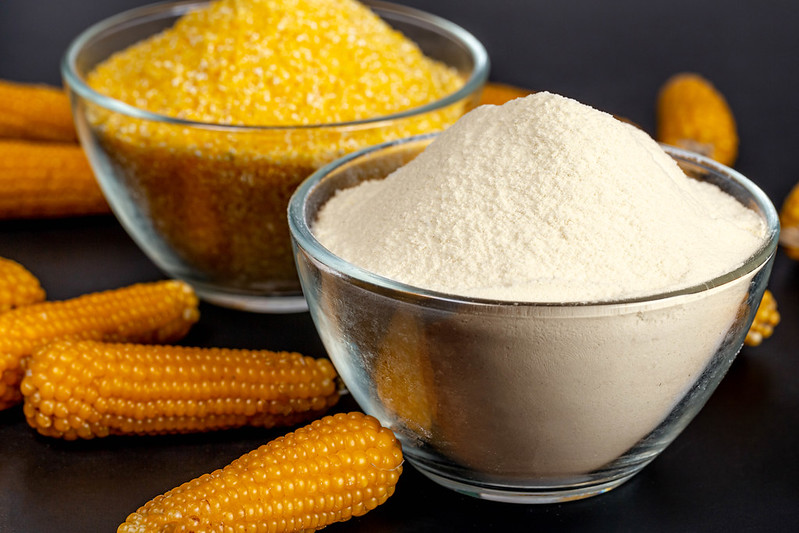 Photo Credit: Marco Verch Professional Photographer | Flickr | CC BY 2.0
Photo Credit: Marco Verch Professional Photographer | Flickr | CC BY 2.0
Recommended Varieties: Tohono O’odham 60-Day, Hopi Blue
When Should You Plant Corn?
Starting sweet corn seeds indoors isn't recommended, unlike many other garden vegetables. They should always be direct sown outside once the soil temperatures reach 55°F. The exact timing will depend on your local climate, but in most cases, this is somewhere from mid-April to mid-May.
Soil Preparation
Prepping for planting is pretty similar to many other things you’d consider growing. It’s easy to skip this step, thinking that it isn’t going to make a difference and that your time is better spent elsewhere. But please take a couple of hours to get that soil ready (and run a soil test). It will help your corn grow better!
The first item on the to-do list is the least favorite—picking rocks. About a week or ten days before you’d like to get seeds in the ground, head out and remove all the large rocks and debris from the field or garden bed. We agree this back-breaking work isn’t fun, but an important step, especially since corn puts down five feet of roots.
Once you’ve cleared out the rocks, work the upper 8 - 10” of soil. If you’ve got a small garden patch, you can easily do this by hand, but we recommend using a rototiller. For larger sections, use the tiller or plow it with the tractor. Believe me, your back and shoulders will thank you. This is also the perfect time to work in 3 or 4 inches of well-aged manure and a high-nitrogen fertilizer to improve the soil and give your corn an extra boost of nutrients.
UMass Amherst recommends broadcasting 3 to 4 pounds of 10-10-10 fertilizer per 100 square feet of soil and then working it into the ground.
Planting and Seed Spacing
Now that you’ve got the soil worked and there’s no longer a threat of spring frost, it’s time to get those seeds in the ground. One of the easy aspects of corn is you don’t need to start seeds indoors and then try to transplant dozens (or hundreds) of seedlings. With their long roots, it’s best to direct sow seeds right where you want to grow.
When it comes to planting, you want to space seeds about 6” apart within the rows and leave 30 - 36” between rows. Set seeds about 1.5 to 2” deep. This depth helps encourage a robust nodal root system after germinating and keeps squirrels and other pesky rodents from snacking on your seeds.
Caring For Your Corn Crop
Sunlight Requirements
We all know that garden plants like tomatoes and peppers love the sun, but surprisingly, corn may need even more of it than they do. To see the best harvest, you want to grow it in a spot with at least 8 hours of bright, direct sunshine daily. And don’t worry about trying to shade it slightly during the late afternoon when it’s blazing hot.
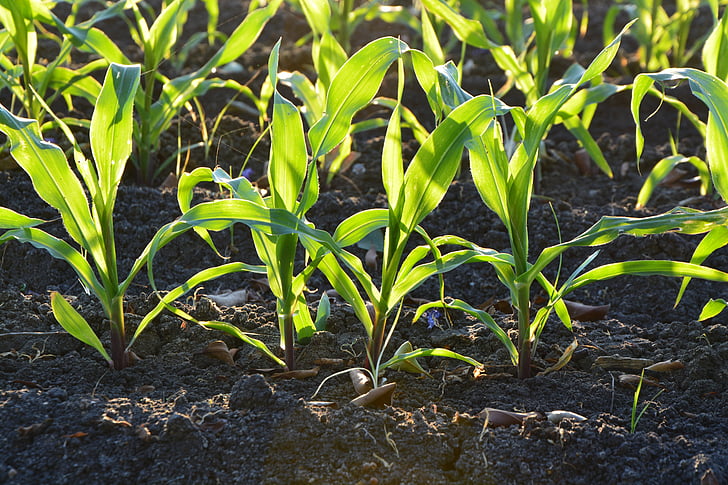 Photo Credit: PickPik
Photo Credit: PickPik
One thing to keep in mind regarding sunshine, though, is your corn will shade out neighboring plants as it grows, so plan your garden layout carefully.
Water Needs for Good Kernel Formation
For the most part, corn is relatively easygoing, but you need to ensure it’s getting enough water through the growing season. Under normal conditions, it needs about one inch of water weekly via rainfall or your garden hose. But if you’ve planted in sandy soil that doesn’t hold water well, or you’re going through a stretch of abnormally dry, scorching hot weather, you may need to increase the water slightly.
It’s also essential to keep plants well-watered when tasselling and for the following three weeks while kernels form. Water stress during this time will result in malformed ears or ears with inconsistent kerneling.
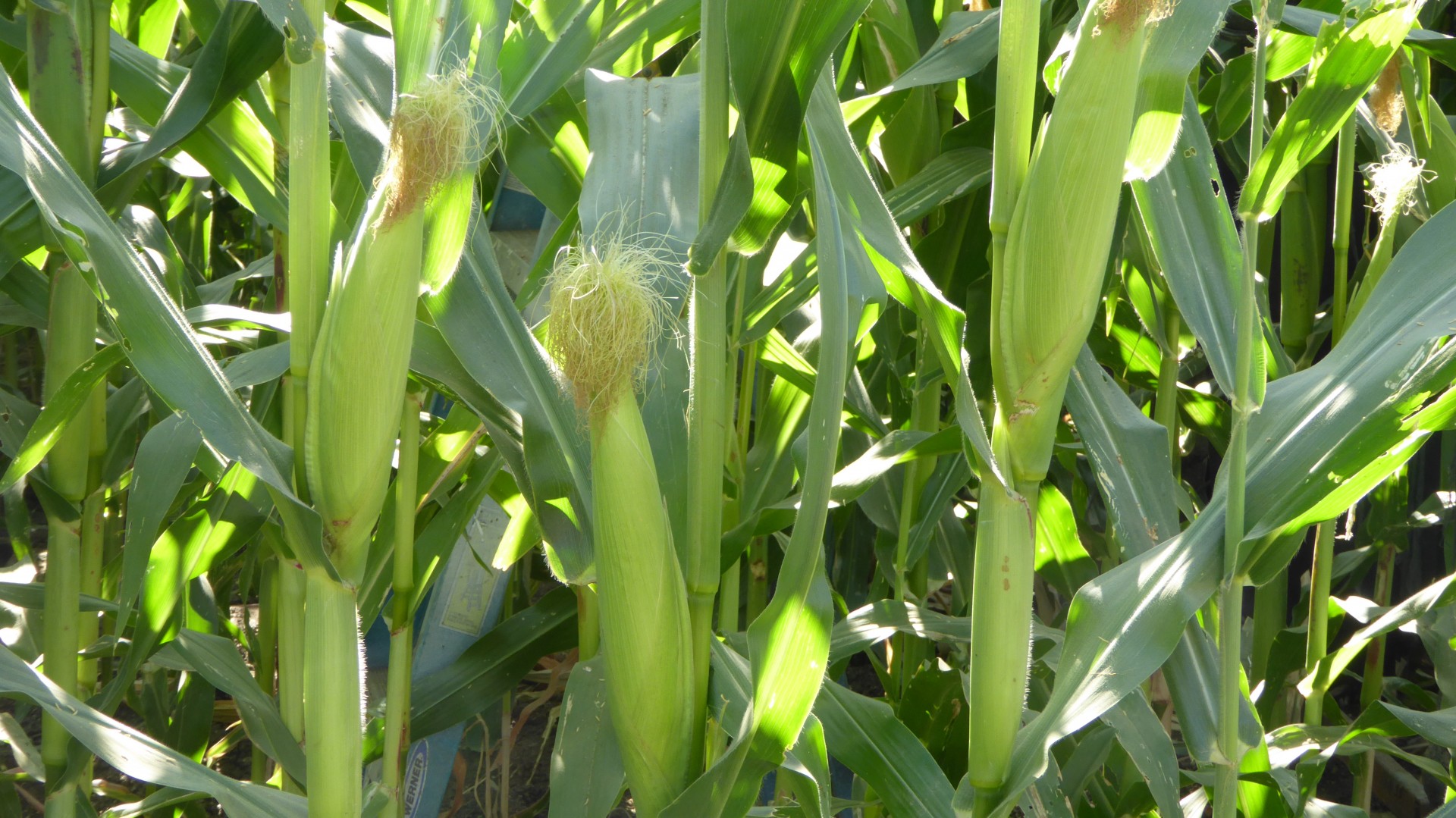 Photo Credit: PublicDomainPictures
Photo Credit: PublicDomainPictures
Keep Your Corn Fertilized
You should have given your soil a good dose of nitrogen before planting, but this isn’t the only time during the season you’ll fertilize. Corn grows quickly, and the soil will need more nutrients throughout the season to fuel that vegetative growth. The specific amounts of fertilizer applied depend on your soil tests and your anticipated yield.
On average, you should add two doses of nitrogen through the season—once when your plants are at the 4 to 6-leaf stage and when they hit the 10 to 12-leaf stage. Now, apply about 2 pounds of fertilizer per 100 feet of row, placing it about two inches away from the plant. Then work it into the soil slightly so the roots can easily access the nitrogen.
Reduce Resource Competition with Weed Management
Once your corn plants begin towering over everything else, they will shade the soil well. This will significantly reduce weed seed germination and shade weeds that need sunlight for good growth. But when your plants are shorter, you want to avoid competition with weeds for resources. Keep the garden bed or field weed-free, carefully chopping weeds off under the soil surface to prevent slicing the corn roots.
Use Companion Plants to Your Advantage
Many of us might remember history lessons of where Native Americans passed along their planting wisdom to the the Pilgrims after they settled the New World. This included the renowned “three sisters” system, where corn, beans, and squash were planted in the same space, so each vegetable contributed a specific benefit to the other two. This planting method is a prime example of companion planting, a concept we should try to incorporate into our modern-day gardens.
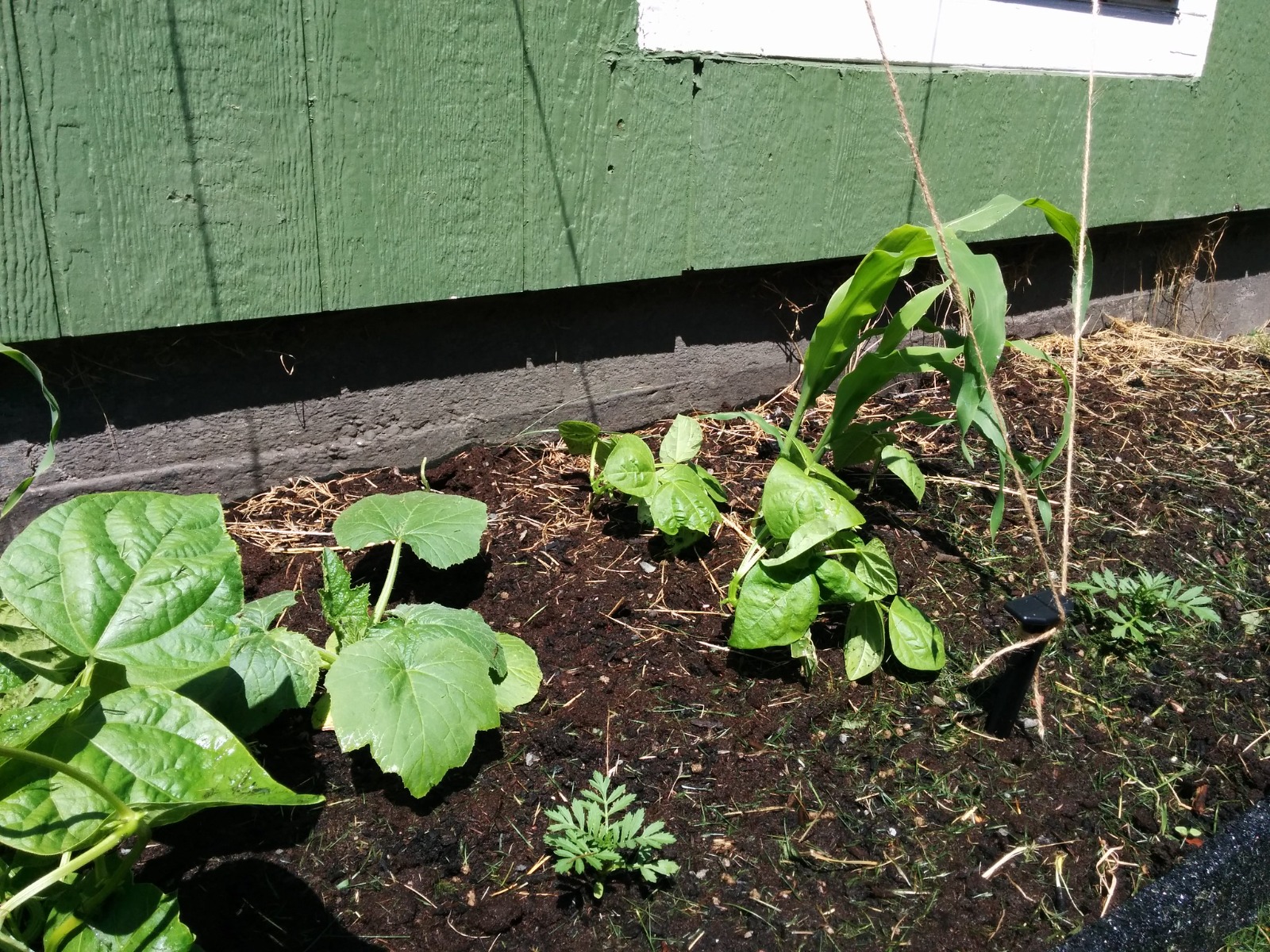 Photo Credit: Dan Ox | Flickr | CC BY-SA 2.0
Photo Credit: Dan Ox | Flickr | CC BY-SA 2.0
Corn makes a great companion plant with many plants beyond squash the beans. It grows really well with herbs, garden veggies, and ornamental flowers.
Some of the best companion plants for corn are:
- Basil
- Beans
- Cucumbers
- Dill
- Marigolds
- Melons
- Mint
- Nasturtiums
- Potatoes
- Pumpkins
- Radishes
- Sunflowers
- Squash
On the flip side, knowing which plants you should grow far away from corn is essential. To reap the best harvest, avoid growing corn near tomatoes, celery, and all cabbage family members.
Tips For a Great Corn Growing Season
Everyone likes tried and true tips and tricks, significantly when they’re growing something new. But sometimes, even the most experienced gardeners can gain extra helpful know-how. So, we’ve pulled together a few hints for producing a great corn crop. You can add one or two to your regular gardening practices or try to hit them all.
- Cover the ground with black plastic in the spring to warm the bed, allowing you to plant sooner.
- If you’re planting numerous varieties, put them in separate areas of the garden (or field) to prevent cross-pollination. Or stagger planting so there is a two-week stretch between when the different varieties tassel.
- Instead of planting in long sections of a couple of rows, plant seeds in a higher number of shorter rows. Since corn is wind-pollinated, this improves pollination by keeping the pollen within the block.
- To extend your harvest, plant another crop once your seedlings have three to five leaves.
Additional Resources
- If you’re interested in native seed varieties, Native Seed Search talks about the different types of corn and gives their recommended native varieties.
- Need help with pest identification? Purdue Extension has a fantastic Sweet Corn Pest Identification and Management guide on its website.
- Kansas State University walks you through corn’s different growth and developmental stages.



